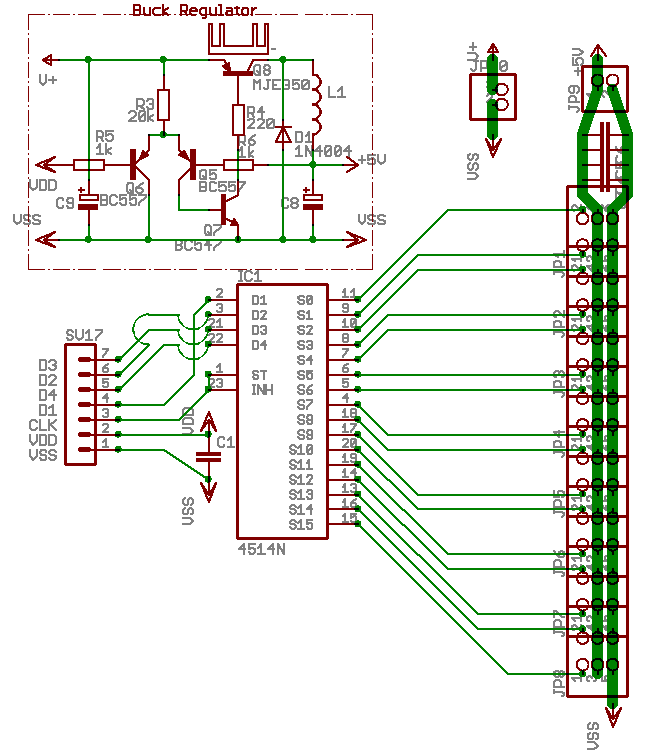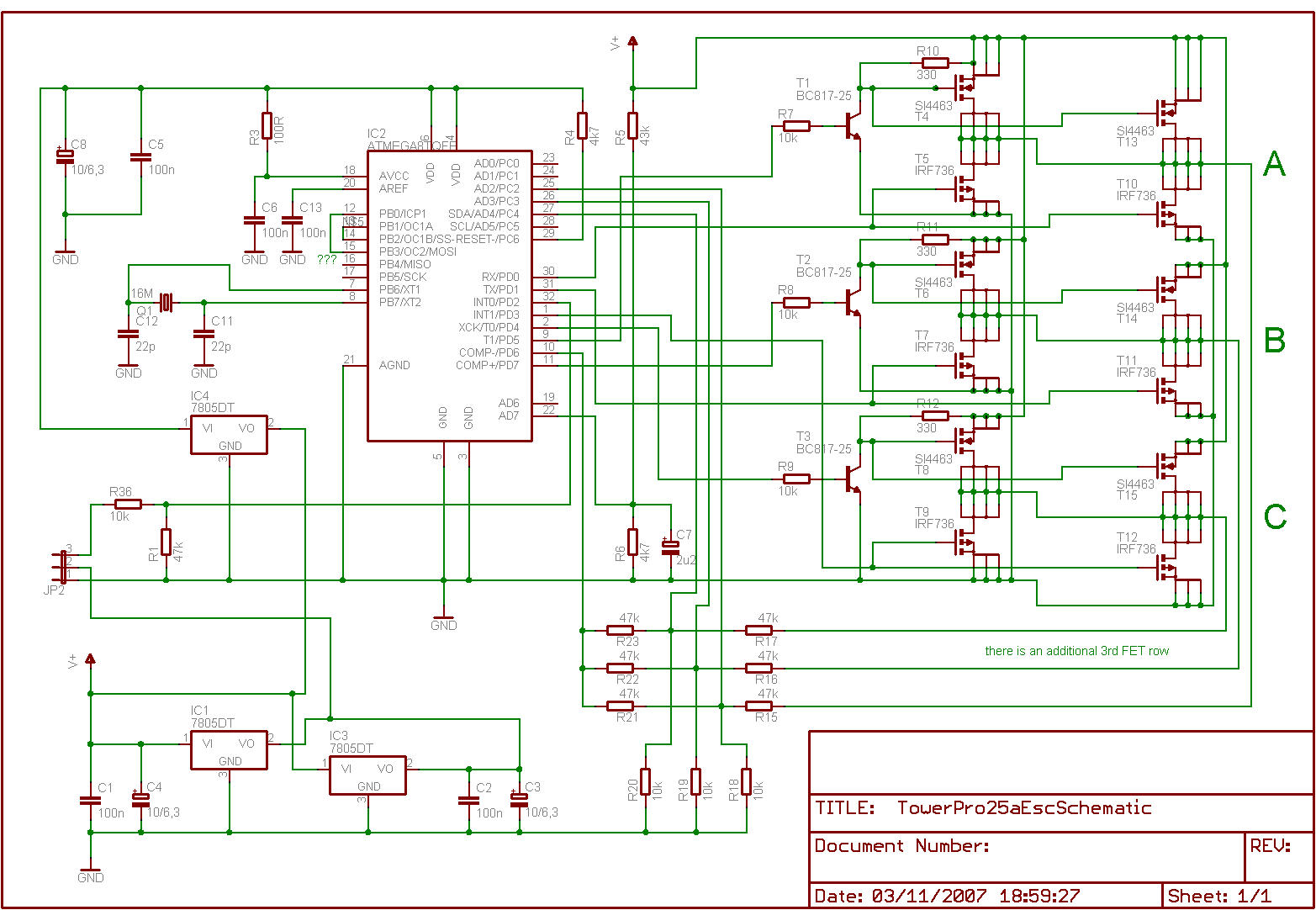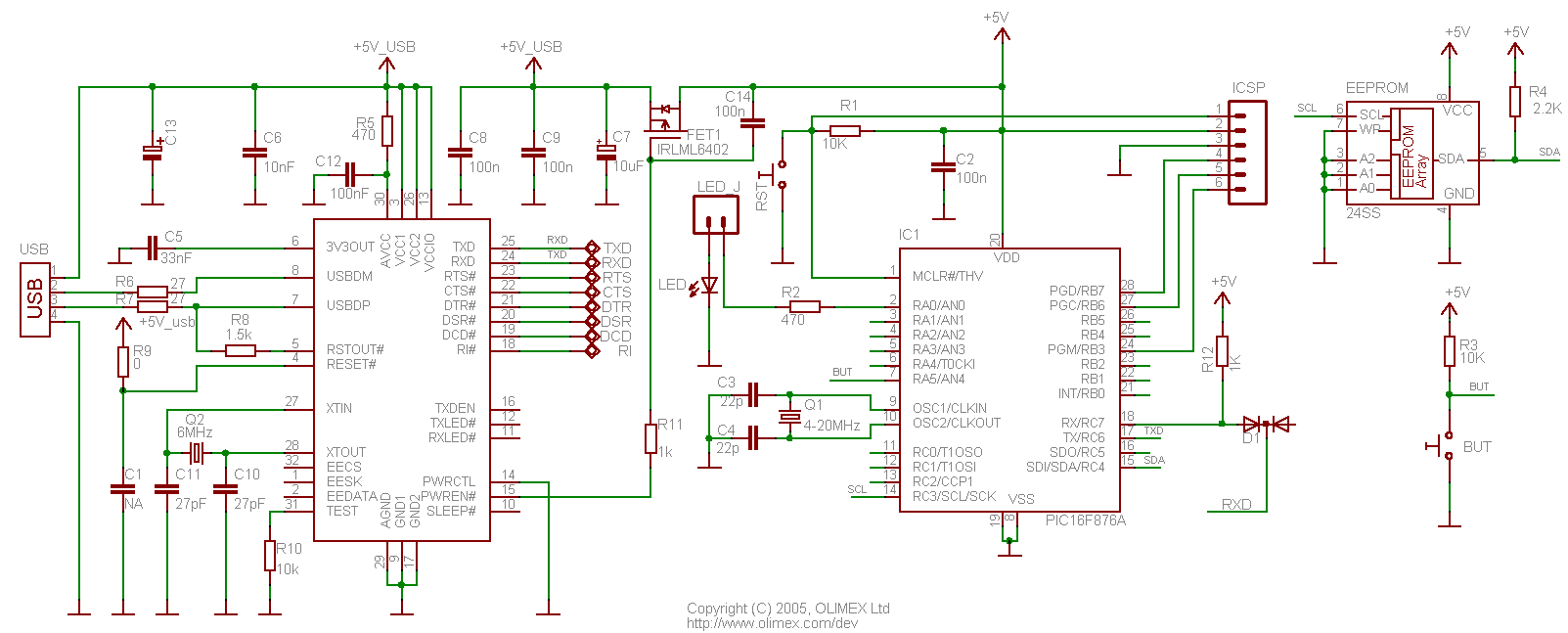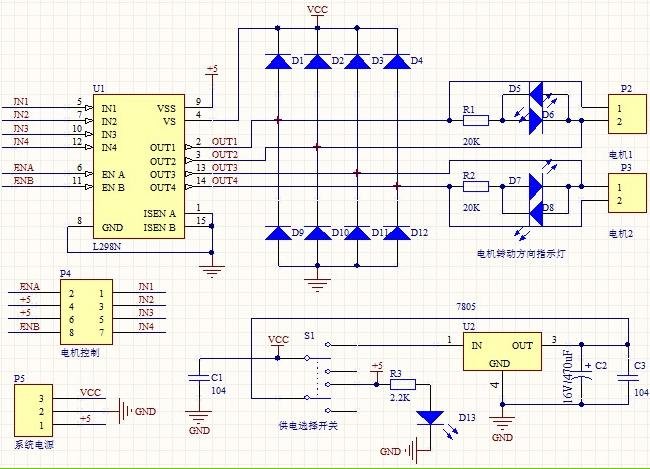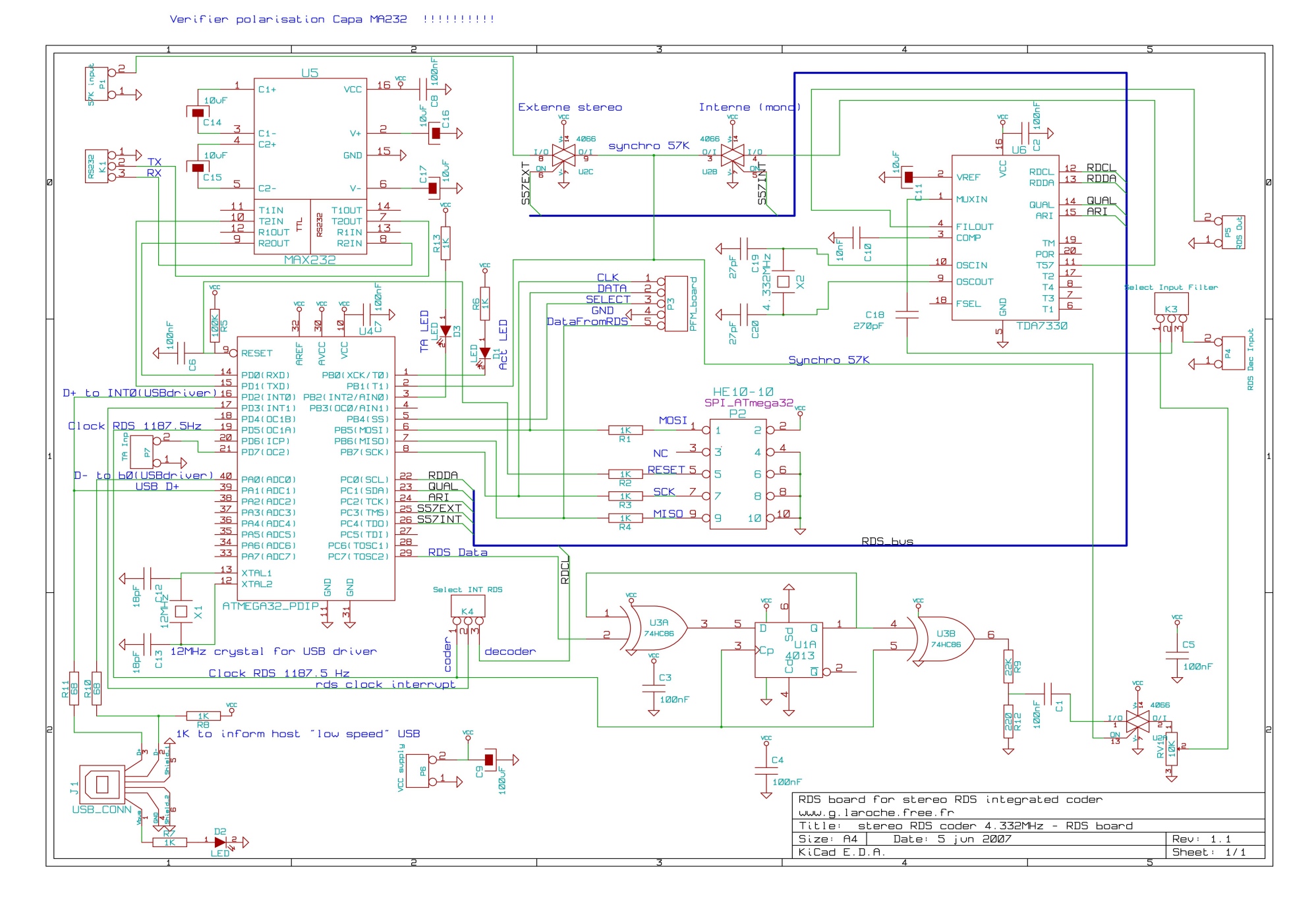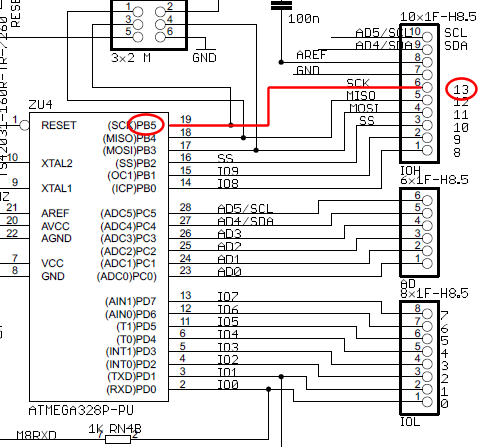
Ethernet board for C64 and SX-64
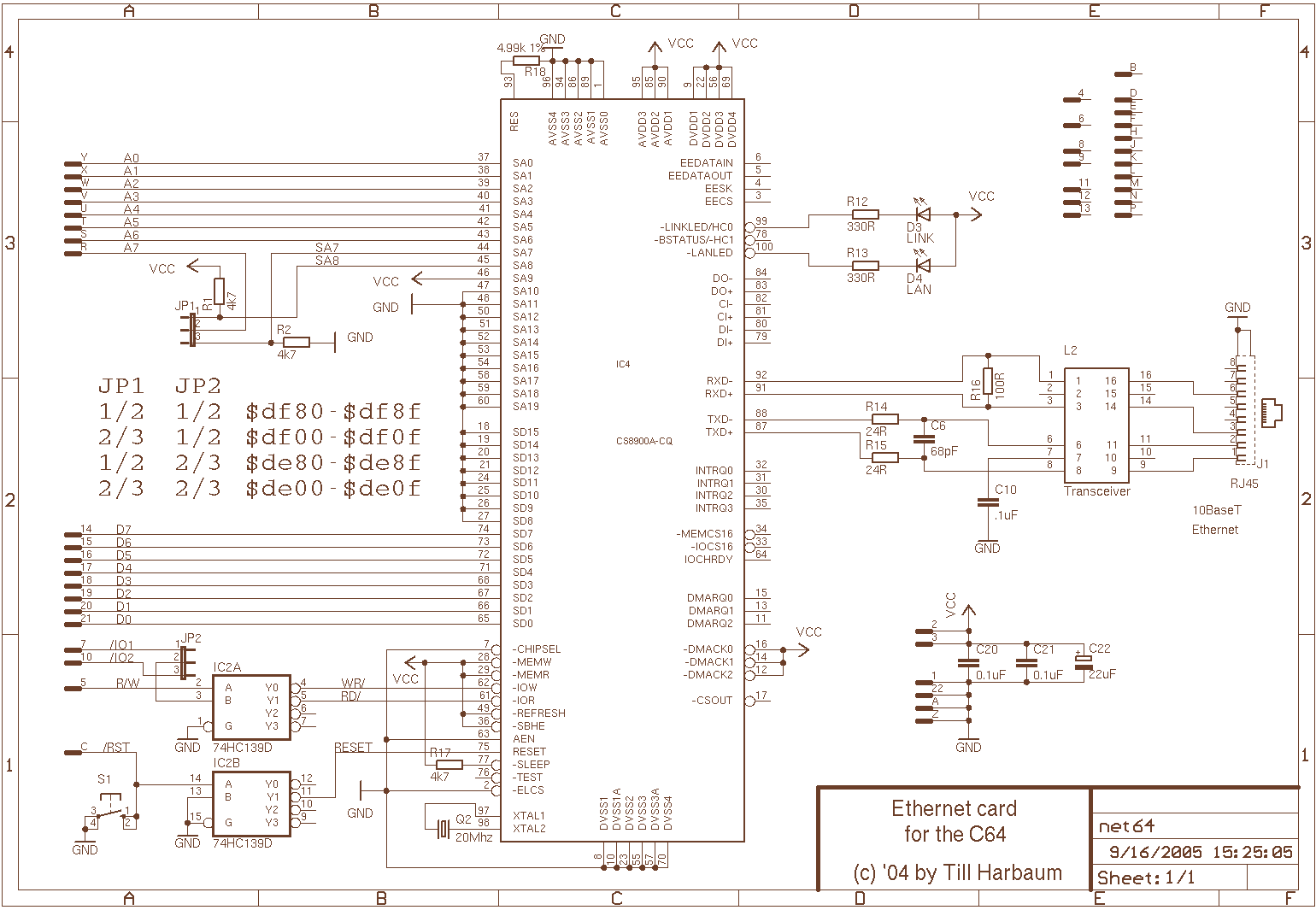
Once I had my SX-64 repaired, I wanted to do something cool with it. I learned about people who added ethernet interfaces to their C64, and since I had some spare ones of the required ethernet chips, I decided to build the net64 cartridge. The net64 cartridge is compatible with the final ethernet cartridge and can be operated with software developed for the TFE. The TFE adapter plugs into the cartridge expansion port on the back of the Commodore 64. It does not require any extra hardware. The TFE consists of one CS8900A based Embedded Ethernet board and some simple glue logic for interfacing with the C64.
The glue logic and the Embedded Ethernet board are mounted on a custom-created PCB for which the schematics can be seen below. The schematics and the layout were made using Orcad, and the PCB was created at the ELAB electronics society of the Royal Institute of Technology in Stockholm.
The C64 8-bit data bus and the low 4 bits of its address bus are directly connected to their equivalents on the CS8900A ISA bus. The IO/1 and the R/W signal from the C64 are used to create the ISA control signals using the 74LS139 decoder. The ISA signal address enable is always active (tied low), and IO/1 is connected to the gate of the decoder.
The net64 cartridge serves as an interface between the Commodore 64 and modern Ethernet networks, enabling data transmission and communication capabilities that were not originally available in the C64 architecture. The CS8900A Ethernet controller is a critical component, providing the necessary functionality for network communication. This chip supports both 10Base-T and 100Base-T standards, allowing for flexible integration into different network environments.
The PCB design incorporates careful routing of the data and address lines to minimize signal degradation and interference. The use of the 74LS139 decoder is essential for generating the necessary control signals for the CS8900A, ensuring that the communication between the C64 and the Ethernet controller is reliable and efficient. The design also includes bypass capacitors and pull-up resistors as needed to stabilize the power supply and ensure proper signal integrity.
In summary, the net64 cartridge represents a significant enhancement to the Commodore 64, allowing it to connect to Ethernet networks. The careful design and integration of the CS8900A with the C64's existing architecture demonstrate a successful melding of vintage computing with modern networking technology. The project not only showcases innovation but also highlights the collaborative efforts in the electronics community, particularly in educational institutions like the Royal Institute of Technology.Once i had my SX-64 repaired i wanted to do something cool with it. I learned about people who added ethernet interfaces to their C64 and since i had some spare ones of the required ethernet chips, i decided to build the net64 cartridge. See the image above for my SX-64 with the net64 cartridge installed. The net64 cartridge is compatible to the final ethernet cartridge and can be operated with software developed for the tfe.
The TFE adapter plugs into the cartridge expansion port on the back of the Commodore 64. It does not require any extra hardware. The TFE consists of one CS8900a based Embedded Ethernet board and some simple glue logic for interfacing with the C64. The glue logic and the Embedded ethernet board is mounted on a custom created PCB for which the schematics can be seen below.
The schematics and the layout were made using Orcad and the PCB was created at the ELAB electronics society of the Royal Institute of Technology in Stockholm. Many thanks for their help! The C64 8-bit data bus and the low 4 bits of its address bus are directly connected to their equivalents on the CS8900a ISA bus.
The IO/1 and the R/W signal from the C64 are used to create the ISA control signals using the 74LS139 decoder. The ISA signal address enable is always active (tied low) and IO/1 is connected to the gate of the decoder.
🔗 External reference
The glue logic and the Embedded Ethernet board are mounted on a custom-created PCB for which the schematics can be seen below. The schematics and the layout were made using Orcad, and the PCB was created at the ELAB electronics society of the Royal Institute of Technology in Stockholm.
The C64 8-bit data bus and the low 4 bits of its address bus are directly connected to their equivalents on the CS8900A ISA bus. The IO/1 and the R/W signal from the C64 are used to create the ISA control signals using the 74LS139 decoder. The ISA signal address enable is always active (tied low), and IO/1 is connected to the gate of the decoder.
The net64 cartridge serves as an interface between the Commodore 64 and modern Ethernet networks, enabling data transmission and communication capabilities that were not originally available in the C64 architecture. The CS8900A Ethernet controller is a critical component, providing the necessary functionality for network communication. This chip supports both 10Base-T and 100Base-T standards, allowing for flexible integration into different network environments.
The PCB design incorporates careful routing of the data and address lines to minimize signal degradation and interference. The use of the 74LS139 decoder is essential for generating the necessary control signals for the CS8900A, ensuring that the communication between the C64 and the Ethernet controller is reliable and efficient. The design also includes bypass capacitors and pull-up resistors as needed to stabilize the power supply and ensure proper signal integrity.
In summary, the net64 cartridge represents a significant enhancement to the Commodore 64, allowing it to connect to Ethernet networks. The careful design and integration of the CS8900A with the C64's existing architecture demonstrate a successful melding of vintage computing with modern networking technology. The project not only showcases innovation but also highlights the collaborative efforts in the electronics community, particularly in educational institutions like the Royal Institute of Technology.Once i had my SX-64 repaired i wanted to do something cool with it. I learned about people who added ethernet interfaces to their C64 and since i had some spare ones of the required ethernet chips, i decided to build the net64 cartridge. See the image above for my SX-64 with the net64 cartridge installed. The net64 cartridge is compatible to the final ethernet cartridge and can be operated with software developed for the tfe.
The TFE adapter plugs into the cartridge expansion port on the back of the Commodore 64. It does not require any extra hardware. The TFE consists of one CS8900a based Embedded Ethernet board and some simple glue logic for interfacing with the C64. The glue logic and the Embedded ethernet board is mounted on a custom created PCB for which the schematics can be seen below.
The schematics and the layout were made using Orcad and the PCB was created at the ELAB electronics society of the Royal Institute of Technology in Stockholm. Many thanks for their help! The C64 8-bit data bus and the low 4 bits of its address bus are directly connected to their equivalents on the CS8900a ISA bus.
The IO/1 and the R/W signal from the C64 are used to create the ISA control signals using the 74LS139 decoder. The ISA signal address enable is always active (tied low) and IO/1 is connected to the gate of the decoder.
🔗 External reference
